Abstract
Introduction: Primary omental infarction (POI) has a low incidence worldwide, with most cases occurring in adults. This condition is rarely considered in the differential diagnosis of acute abdominal pain in childhood.
Material and methods: We present 2 cases of omental infarction in an obese 8-year-old boy and a 5-year-old boy who presented with acute abdominal pain in the right abdomen. Both patients were initially treated with intravenous fluids and analgesics with no improvement. Abdominal ultrasound of the first patient showed free intraperitoneal fluid, meteorism and distended bowel loops. The appendix was not visualized. With a presumptive clinical diagnosis of appendicitis the child underwent laparotomy.
On entering the peritoneal cavity an omental infarction was seen and a portion of the omentum was resected. Appendectomy was performed.
The second patient presented with acute abdominal pain in the right upper quadrant, which started 2 days before. There was a history of possible abdominal trauma about 3 weeks earlier. The patient had repeated ultrasound examinations and a CT scan of the abdomen which showed a tumor in the right upper abdomen. He underwent laparoscopy and resection of the omental infarction, as well as tactical appendectomy.
Results: The postoperative period was uneventful and the patients were discharged on day 3, respectively 4 after surgery. Histology showed a normal vermiform appendix and an omental infarction in both cases.
Conclusion and discussion: Since the omental infarction as etiology of acute abdominal pain is uncommon in children, we emphasize the importance of accurate diagnosis and appropriate treatment of omental infarction.
Key words
2021 Copyright OAT. All rights reserv
primary segmental omental infarction (POI), appendicitis, childhood
Introduction
Abdominal pain is a common complaint in children presenting to the emergency room. The differential diagnosis includes serious surgical pathologies such as acute appendicitis, intussusception, malrotation, torsion of the gonads, all of which require prompt intervention. In children, primary omental infarction (POI) is rarely considered in the differential diagnosis of acute abdominal pain. This condition has a low incidence worldwide, with most cases occurring in adults.
The etiology of the condition is unclear and it can appear with or without omental torsion.
Case Report 1
We present a case of primary omental infarction (POI) in an obese 8-year-old boy who presented with clinical, hematological and radiological findings of acute appendicitis.
The patient was admitted to our department due to acute abdominal pain of approximately 12 hours duration, with nausea, but no vomiting. The child had no significant past medical history. He was obese with a BMI of 35,1 kg/m2. The physical examination revealed marked abdominal tenderness localized to the right lower abdomen. His temperature was 37.4°C, and a laboratory investigation revealed a white blood cell count of 12220 leukocytes/mm3 and elevated C-reactive protein (1.68 mg/dl).
An ultrasound examination did not reveal the appendix, but free peritoneal fluid in Douglas’ space and between the distended bowel loops in the right abdomen.
The patient was initially treated with intravenous fluids and analgesics, but showed no improvement.
The child was thus operated on under the preoperative presumptive clinical diagnosis of acute appendicitis. The right iliac fossa was explored and a small amount of serous fluid was found. A grossly inflamed omental mass was seen in the right lower quadrant and a partial omental resection was undertaken (Figure 1).
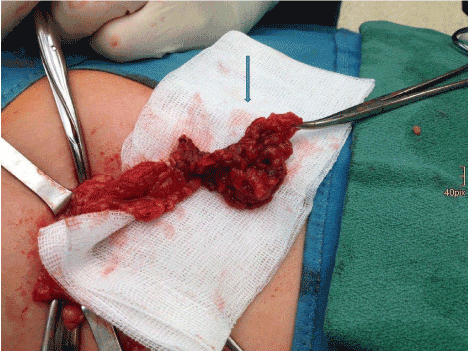
Figure 1. Omental infarction (intraoperative aspect)
The cecum was found in a high position with a normal appendix located retrocecal below the liver. An appendectomy was performed. The pathology of the surgical specimens revealed primary omental infarction and an appendix without inflammation (Figure 2).
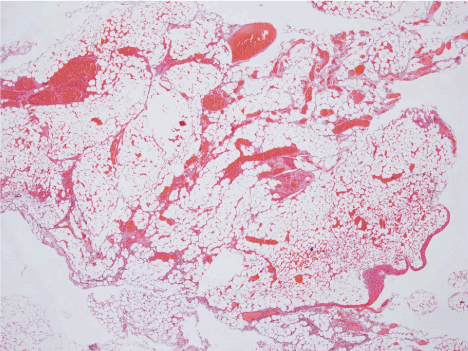
Figure 2. Omental infarction – Histological aspect
The patient’s postoperative course was uneventful and he was discharged on the third postoperative day.
Case Report 2
A 5-year-old boy presented with acute abdominal pain in the right upper quadrant which started 2 days ago. There was one episode of diarrhea and vomiting the day before, but no fever at home. The pain had a rather colicky character.
There was a bicycle fall 3 weeks ago, but no signs of lesion on the abdomen at that time. The blood tests were normal, besides a mild anemia.
The primary ultrasound examination (Figure 3) showed a moderately echogenic, solid, non-compressible lesion of 8x3x4 cm in the region of maximal tenderness and a small amount of fluid in Douglas’ pouch.
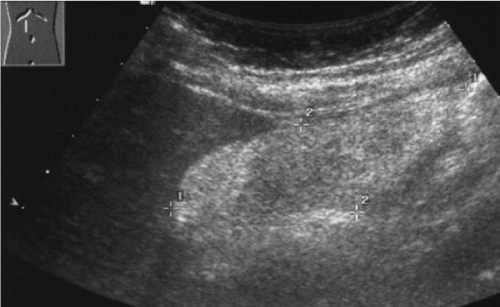
Figure 3. Ultrasound aspect of the omental infarction
An X-ray of the abdomen and the thorax showed no abnormalities.
The patient was treated initially with intravenous fluids, analgesics and bed rest, but there was no clinical improvement. The follow-up ultrasound 2 days later showed a similar image of the lesion and a CT scan of the abdomen (Figure 4) was performed.
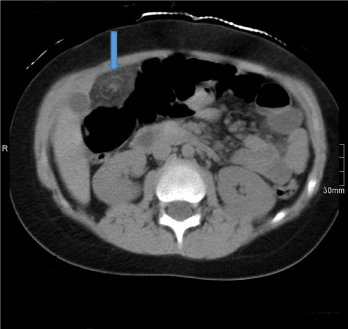
Figure 4. CT scan confirmed the tumor in the right upper quadrant
Because the symptoms of the patient didn’t improve with conservative treatment a laparoscopy was performed with resection of the affected omentum and tactical appendectomy.
The histological exam revealed infarction of the omentum (Figure 5) and a normal appendix without inflammation.
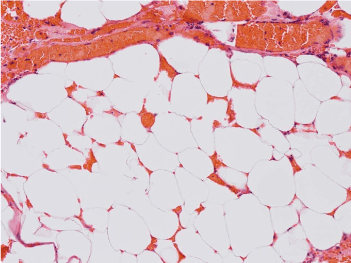
Figure 5. Omental infarction- – Histological aspect
The patient recovered uneventfully and was released from the hospital on the 4th day after the operation.
Discussion
Primary omental infarction (POI) is an uncommon condition that may present as acute abdomen in any age group, but mainly in the fourth and fifth decade of life, and with a male-to-female ratio of 2:1 [1,2].
Almost all cases of primary omental infarction have been reported in the past 15-20 years. This is due to probably an increased incidence of obesity epidemic or an increased recognition (increased use of CT). About 85 % of cases have been reported in adults and only about 15% in children.
Most authors support the hypothesis that it is associated with an anomalous and fragile blood supply of the right lower portion of the omentum, which is consequently susceptible to infarction [3]. It might be provoked by kinking of veins caused by the patient’s position or vascular congestion after large meals, and abrupt increases in intraabdominal pressure following coughing. Varjavandi et al. [4] and Loh et al. [5] suggested that obese children are predisposed to omental infarction. They postulated that increased fat deposition outstrips the blood supply to the developing omentum, causing relative ischemia from traction. Our first case was an obese child. However, the true incidence of this entity is underestimated. It is believed that in recent years there has been an increasing prevalence of POI in children, which appears to coincide with the increased prevalence of obesity in children [4].
A literature review revealed a few series involving children [1,2,4-9] and some sporadic isolated cases [10]. Ultrasound and CT scan aid in the diagnosis of omental infarction [5,7,8,11]. Ultrasound generally shows a moderately echogenic, solid, non-compressible ovoid lesion in the region of maximum tenderness but it is operator dependant [3,7,8,11]. The CT scan shows a solitary, well-defined, triangular or ovoid mass between the abdominal wall and transverse or ascending colon that has a heterogeneous, sometimes whorled pattern of linear fat strands, and surrounding fat infiltration may be present [3,11].
CT scan was not done in our first case because of strong suspicion of acute appendicitis and it is not the authors routine to subject every case of suspicion of acute appendicitis to a CT scan of the abdomen.
Nevertheless, there are cases wherein the omental infarction was found in children undergoing abdominal exploration for acute appendicitis [1] such as in our patient, in whom US could not reveal the appendix, which was positioned in a high retrocecal position, and the distended bowel loops prevented the appearance of any hyperechoic mass due to the omental infarct.
Furthermore, the clinical, hematological, and secondary US findings of acute appendicitis in this patient were strong indicators of acute appendicitis; CT was thus not performed to investigate the situation further. Moreover, there are cases in the literature in which CT findings supported the diagnosis of acute appendicitis, but where an alternate cause was occasionally subsequently found, such as omental infarction [9].
The management of POI remains controversial, since the comparative risk of leaving a necrotic segment of omentum in the abdomen versus the risk of surgery is not known [4]. When the preoperative diagnosis is confirmed by the imaging studies and the patient’s condition is stable some authors advocate conservative treatment with antibiotics, analgesia, and hospitalization. In those uncomplicated cases, conservative treatment is adequate, avoiding the risk of postoperative adhesions [4] although the resolution of abnormalities is slow and may last from 4 weeks to 4 months [10].
There is no clinical trial comparing conservative versus surgical management of omental infarction [12]. In a rare instance when diagnosis can be made confidently preoperatively, conservative management can be done but it may be complicated with abscess formation, adhesions or sepsis [13].
Other authors recommend prompt resection of the inflamed tissue because surgical intervention is associated with a faster recovery and better pain control, and prevents complications such as abscess, possibly sepsis, adhesion formation, and bowel obstruction [4].
Operative management includes excision of the involved part of greater omentum either by laparotomy or minimal invasive surgery [14].
Laparoscopy has the advantage that it can visualize other intraabdominal organs, it is minimally invasive and the chances of missing the pathology are less [15].
Conclusions
In conclusion, despite its uncommon occurrence, primary omental infarction should be considered in the differential diagnosis of acute abdomen, particularly in obese children. The aim of presenting this cases is that omental infarction should be kept in the differential diagnosis of acute abdomen especially acute appendicitis and a search should be made to see the lower part of greater omentum in the right iliac fossa should a patient, which is operated for acute appendicitis, show a normal appendix, normal terminal ileum and right ovary in a female. Although it is difficult to draw any firm conclusion from 2 cases, the rapid and uneventful postoperative course of our patients supports early operative intervention, at least in those cases where the preoperative diagnosis is uncertain.
References
- Nubi A, McBride W, Stringel G (2009) Primary omental infarct: conservative vs operative management in the era of ultrasound, computerized tomography, and laparoscopy. J Pediatr Surg 44: 953-6. [Crossref]
- Helmrath MA, Dorfman SR, Minifee PK, Bloss RS, Brandt ML, et al. (2001) Right lower quadrant pain in children caused by omental infarction. Am J Surg 182: 729-732. [CrossRef]
- Puylaert JB (1992) Right-sided segmental infarction of the omentum: clinical, US, and CT findings. Radiology 185: 169-172. [CrossRef]
- Varjavandi V, Lessin M, Kooros K, Fusunyan R, McCauley R, et al. (2003) Omental infarction: risk factors in children. J Pediatr Surg 38: 233-235. [CrossRef]
- Loh MH, Chui HC, Yap TL, Sundfor A, Tan CE (2005) Omental infarction--a mimicker of acute appendicitis in children. J Pediatr Surg 40: 1224-1226. [CrossRef]
- Rimon A, Daneman A, Gerstle JT, Ratnapalan S (2009) Omental infarction in children. J Pediatr 155: 427-431. [CrossRef]
- Baldisserotto M, Maffazzoni DR, Dora MD (2005) Omental infarction in children. Color Doppler sonography correlated with surgery and pathology findings. AJR Am J Roentgenol 184: 156-62. [Crossref]
- Schlesinger AE, Dorfman SR, Braverman RM (1999) Sonographic appearance of omental infarction in children. Pediatr Radiol 29: 598-601. [CrossRef]
- Lee W, Ong CL, Chong CC, Hwang WS (2005) Omental infarction in children: imaging features with pathological correlation. Singapore Med J 46: 328-32. [Crossref]
- Foscolo S, Mandry D, Galloy MA, Champigneulles J, De Miscault G, et al. (2007) Segmental omental infarction in childhood: an unusual case of left-sided location with extension into pelvis. Pediatr Radiol 37: 575-7. [Crossref]
- Grattan-Smith JD, Blews DE, Brand T (2002) Omental infarction in pediatric patients: sonographic and CT findings. AJR Am J Roentgenol 178: 1537-1539. [Crossref]
- Concannon ES, Hogan AM, Ryan RS, Khan W, Barry K (2013) Primary omental infarction: a rare cause of acute abdominal pain. Clin Experiment Med Sci 1: 233-40.
- Soobrah R, Badran M, Smith SG (2010) Conservative management of segmental infarction of the greater omentum: a case report and review of literature [Internet]. Case Reports in Medicine.
- Paroz A, Halkic N, Pezzetta E, Martinet O (2003) Idiopathic segmental infarction of the greater omentum: a rare cause of acute abdomen. J Gastrointest Surg 7: 805-808. [CrossRef]
- Peirce C, Martin ST, Hyland JM (2011) The use of minimally invasive surgery in the management of idiopathic omental torsion. The diagnostic and therapeutic role of laparoscopy. Int J Surg Case Reports 2: 125- 7. [Crossref]





